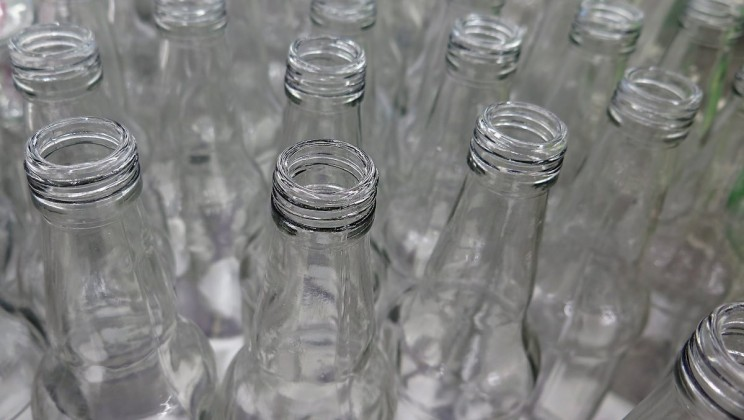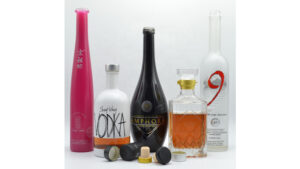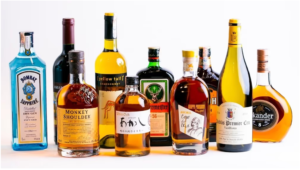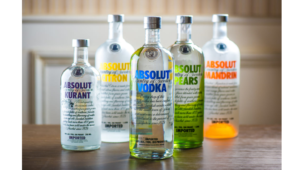Glass is a solid material that is usually transparent or translucent as well as hard and brittle. It might be one of the most common materials on Earth, which is very easy for you to see glass in our regular life. More over, glass is one of the most versatile materials globally, which has been widely used to manufacture a great variety of products. From tiny beads to large sculptures, and from ordinary glass container bottles to sophisticated lenses and optical fibers, the multiple uses of glass have transformed our world.
We have to admit that glass has become a part and parcel of our life, and plays an indispensable role in technology, architecture, scientific works, construction, decoration and so on. Therefore, using glass packaging has been the tren for packaging industries. Cooperating with a reliable glass bottle supplier, glass bottle manufacturer in China will make your glass sourcing easily and efficiently.
Through we all know glass is important, have you ever been curious about glass? Why some glass are colored? Why some glass are transparent while others are translucent? In this article, we will collect some of the best fun glass facts. If you are interested, please keep reading to find out just what they are.
Table of Contents
ToggleFacts 1 - History Of Glass
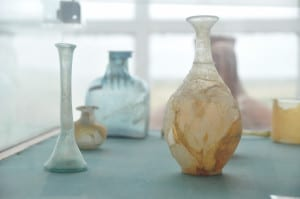
Glass is nothing new to humans. There are reports that people have been manufacturing glass since the 3600BEC. Archaeologists have found that glass was made in Egypt, Syria, or Mesopotamia (now Iraq, Kuwait, etc) at first. That means glass making has been for over 6000 thousand years on Earth.
Fact 2 - What Is Glass
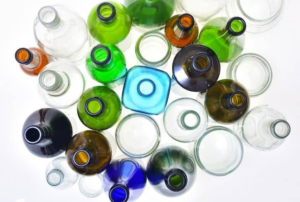
Glass is a non-crystalline, often transparent amorphous solid material that is used in numerous applications in our daily lives. It is made from natural and abundant raw materials like sand, soda ash, and limestone melted at a very high temperature to form a new material called glass.
At a high-temperature, glass is structurally similar to liquids. However, at ambient temperature, it behaves like solids. Therefore, glass can be poured, blown, pressed, and molded into various shapes.
The glass bottle manufacturing process in glass industries depends on the final product being manufactured and its end-applications. The exact composition of glass varies to meet the specific application requirements. The most commonly used type of glass, the soda-lime glass, is made of silica sand, soda ash, limestone, dolomite, and recycled glass. Additional materials such as iron oxide or cobalt can be added to the mix to give a green or blue color to the glass.
Fact 3 - How Is Glass Made
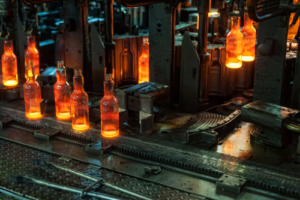
Glass producers are characterized by a multitude of production processes depending on the final product manufactured and its end-applications. However, all these manufacturing processes have a common origin: glass first needs to be melted.
In the glass melting process, two raw materials are required including sand and recycled glass. These raw materials will be mixed together, and charged in a furnace at a high temperature around 1500 degrees, as a result to form molten glass. The molten glass is then taken out from the furnace to be shaped and cooled down afterwards.
Fact 4 - Is Glass Solid or Liquid
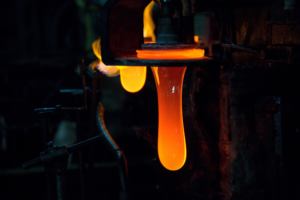
If you just look at the glass, you might get a conclusion that glass is a solid. However, if you could look at glass through a microscope, then you would see that the piece of glass are arranged irregularly. From this, you might conclude that glass is a liquid. Therefore, scientists classified glass as an amorphous solid. Its molecules are close together, as they would be in a solid, but they are arranged in an irregular pattern, similar to that of a liquid.
Fact 5 - Speed of Crack In Glass
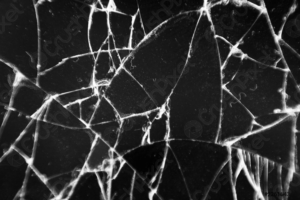
Even though glass is solid (or liquid) in physical form, it can break easily. But do you know the speed at which glass shatters? Interestingly, the cracks of glass move at an incredible speed of about 3000 miles/hour or 4828 kilometers/hour. Compared to that speed of sound in dry air is about just 767 miles/hour.
Fact 6 - Old Glass Turn Purple
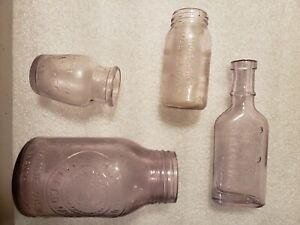
Have you ever found that the colorless transparent glass container bottles turn different shades of purple? Do you know why?
Glass, especially old glass, will tend to turn purple when exposed to the rays of the sun or to other ultra-violet sources. It is a photochemical phenomenon that is not yet perfectly understood. It is generally accepted that the ultra-violet light initiates an electron exchange between the manganese and iron ions. This changes the manganese compound into a form that causes the glass to turn purple.
Fact 7 - How is Stained Glass Made ? What Gives Glass Color ?
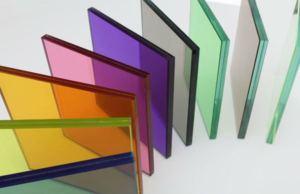
Stained glass is not a new product for us, existing in our daily lives here and there. We’ve all seen stained glass windows, but how exactly are they made?
Glass is colored by adding metal oxides or metal powders to molten glass. Combining other minerals with the basic raw materials of glass like sand, lime, and soda ash can result in glass of different colors. Cobalt blue colored glass, deep-blue glass, is one of the most common stained glass you may have ever seen in your life. That dark blue color comes from adding cobalt to molten glass. Cupric oxide will give a turquoise color, Manganese dioxide will produce a purple color, and Cadmium sulfide will produce a red color.
Fact 8 -Types of Glass
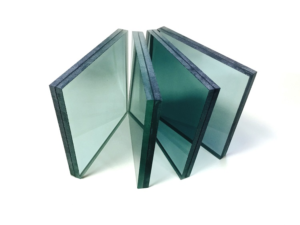
Laminated glass is constructed from two piles of glass that are bonded together with inter-layers to forms a permanent bond. The inter-layers help to support and hold the glass to create a strong, uniformed layer even when broken. Laminated glass is harder to break due to the inter-layer bond, which makes it an excellent material to use in wide range of industries: Buildings that need high security and homes to prevent break-ins; automobile and aviation industries for the safety of passengers; homes that are in areas where tornadoes are frequent; jewelry showrooms; in police cars, police stations, and bulletproof vests.
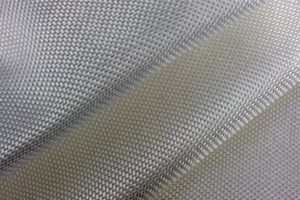
Fiberglass is made of fine, solid rods of glass, each one of these rods measures less then one-twentieth of the width of a human hair.
It is used to make wool-like fibers that serve as heat insulation material. The fiberglass can also be used like wool or cotton fibers to make glass yarn, tape, cloth, and mats. It is also used for electrical insulation, chemical filtration, and to make firefighter suits.
Fiberglass is combined with plastic and used in airplane wings, body parts of automobiles, and boat hulls.
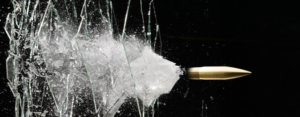
Bulletproof glass is a thick multi-layer of laminated glass that can stop heavy-caliber bullets. It shatters on impact, but the inter-layers of the laminated glass hold the glass fragments together. This type of glass is also used to manufacture bank teller windows and make windshields for military tanks and aircraft.
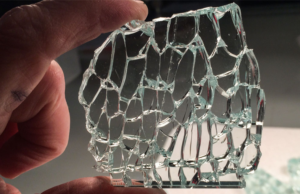
Tempered glass is stronger than laminated glass. It is a single sheet of glass and does not have several layers similar to the laminated glass. It is used for glass doors, side and rear windows of automobiles, and basketball backboards. This glass is hard to break, but when it does, it shatters into many fragments.
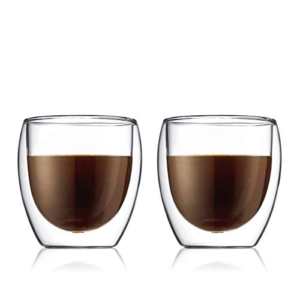
Heat-resistant glass is high in silica and contains boric acid. This glass expands slightly when heated and does not crack at high temperatures. Due to the heat-resistant property, this type of glass is used to manufacture cookware, household, laboratory, and industrial equipment. It is also used in the manufacture of electric bulbs and television sets.
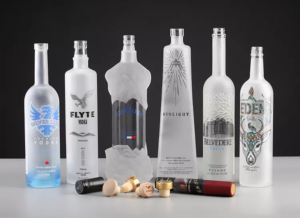
Frosted glass is another very useful type of glass. Frosted glass is produced by the sandblasting or acid etching of clear sheet glass. This creates a pitted surface on one side of the glass pane and has the effect of rendering the glass translucent by scattering the light which passes through, thus blurring images while still transmitting light.Thanks for the unique property of frosted glass, you might see that frosted glass is used in various doors and windows where both the light and privacy are important.

Heat reflective Glass has two panes of glass separated by a layer of argon gas that improves insulation. This type of glass is used to make windows of apartments and other buildings. It helps keep your home warm during winter and cool during summer.
Fact 9 - Why Glass Is Eco-friendly
Glass is eco-friendly material, because glass can be almost 100% recycled many times without the loss of it original properties. Thus, glass is environmental to Earth. Recycling glass reduces the amount of carbon dioxide released into the atmosphere.
Fact 10 - Glass Decompose
Glass of durable and resilient property, is one of the longest man-made materials in Earth, which takes a very, very long time to break down. In fact, it can take a glass bottle one million years to decompose in the environment, possibly even more if it’s in a landfill.
Conclusion
You must have a comprehension of the best 10 fun facts about glass if you have read over this post. In this post, it is impossible to list all the facts about glass. So, you are welcome to share your commends. We are expert in supplying glass bottles and jars, various size capacities, shapes, as well as custom glass bottles, meeting your requirements in different product industries. If you are looking for high-end China glass bottle manufacturers, please consult us at any time.

